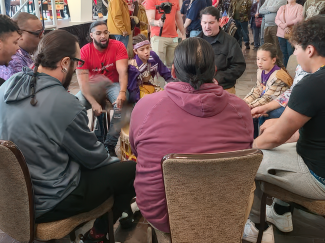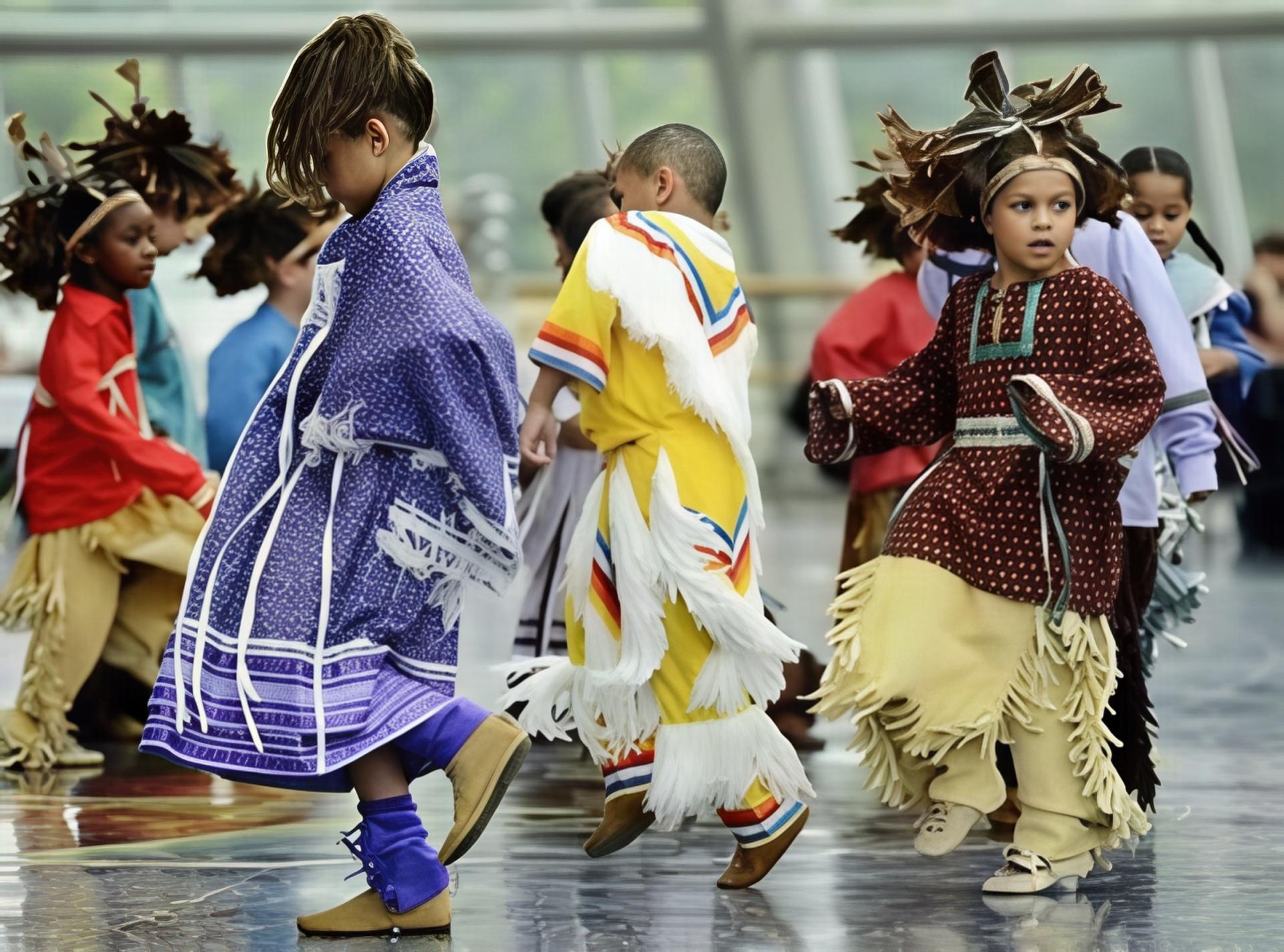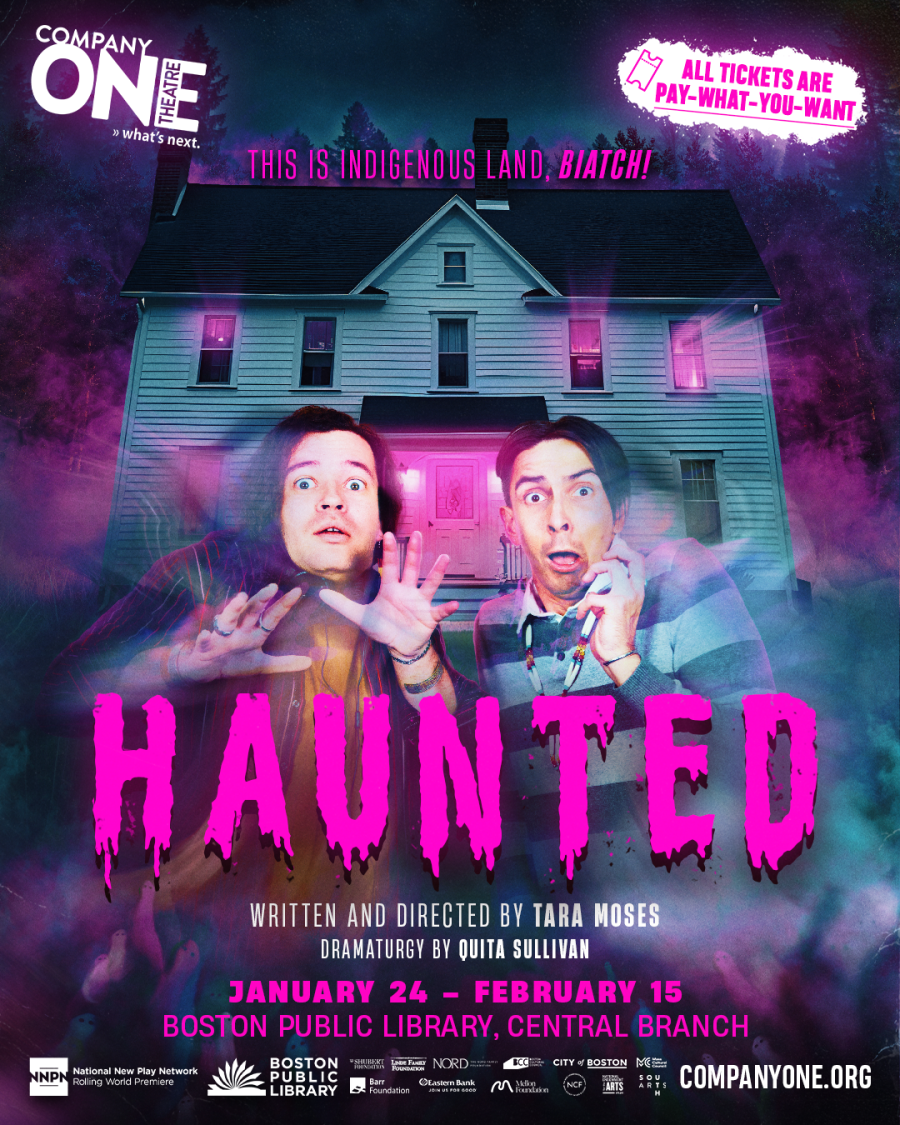
Michael Thomas (Mashantucket Pequot) works at the Cultural Resources Department of the Mashantucket Pequot Tribe and serves on the Board of Directors for the Mashantucket Pequot Museum and Research Center. A leader in the community since a young age, he now lends his powerful voice to inspiring the youth of his Nation with the use of traditional songs to represent the Pequot community in ceremonies, socials, and powwows. Candyce Testa (Mashantucket Pequot), Cultural Survival Bazaar Events Manager, spoke to Thomas about recent rematriation efforts.
Cultural Survival: Your team recently helped recover and rematriate some ancestral remains. What is the significance for the community?
Michael Thomas: In our most recent effort, there were items uncovered that belong to our Wangunk relatives, who are Connecticut River folks, and their ancestral lands, what is now Wesleyan University. Wesleyan had some Wangunk remains, and others had been discovered in construction projects nearby. Our Tribe and the Mohegan Tribe sent Historical Preservation Office and Cultural Resource Department teams to help the Wangunk relatives reinter their ancestral remains.
All of those returned to the Earth are important and beautiful to be a part of, [but] this one was extra special because of how few of our Wangunk relatives are remaining. To see two Tribes come together to help handle those ceremonial responsibilities was beautiful. These were collection items that were accumulated during the years when most colleges didn’t keep very good records of such things. They were responding to recent changes in the Native American Graves Protection and Repatriation Act, which has been amended to require universities to catalog the things they have. Wesleyan has known for only a few years that they were Wangunk remains and that they had them.
 Mashantucket Pequot Medicine Woman, "Laughing Woman," giving a prayer while flag bearers prepare to ceremonially enter the circle, opening the space for all Schemitzun dancers.
Mashantucket Pequot Medicine Woman, "Laughing Woman," giving a prayer while flag bearers prepare to ceremonially enter the circle, opening the space for all Schemitzun dancers.
CS: How were you able to get the remains returned?
MT: Wesleyan contacted the Tribal Historic Preservation Office of our Tribe, as well as Mohegan, and asked for the help that we provided. And if anyone asks for that help, we step up and help to the best of our ability. One of the people in attendance from Wesleyan was a descendant of John Underhill. [Underhill led a militia during the Pequot War and is remembered for his graphic retelling and wood-carved rendering of the genocide of the Pequot people during the Mystic Massacre on May 26, 1637.] Remarkably, she was a kind, young lady who felt much differently about the history than Underhill himself. And so she asked all of the Tribal people in attendance how she could go about properly showing her perspective on that history to Tribal people. My advice was to go speak to as many people from Tribal communities as possible, not just Tribal officials.
CS: How was the rematriation celebrated?
MT: There was a reinterment ceremony. The Wangunk relatives dug the pit, and we prayed around it and offered sacred herbs. Then the Wangunk people, along with some of our young people from both Tribal communities, put the items into the pit and helped cover them after another set of songs and prayers. After that ceremony (which was in a cemetery called the Indian Hills Cemetery, ironically enough), there is a hilltop where there are ancient Wangunk graves that have not been disturbed. After we were done at the bottom of the hill where the pit was, the Tribal people let the rest of the folks leave, and we went together to the top of the hill so that we could pay our respects to the area of unmarked graves up there with one of the most beautiful Connecticut views that I’ve ever seen. It immediately became apparent to us why it was a place chosen by Wangunk relatives as soon as we got to the top, and so the ceremony itself was fantastic. What we did afterwards at the top of the hill with just the Tribal people alone was equally beautiful.

Little Fox Dance Troupe made up of preschoolers from the Pequot community daycare.
CS: Who from the Tribal community were a part of that ceremony?
MT: From our community, myself, Mike Johnson, and Jolina from the Tribal Historic Preservation Office. There were a couple of Mohegan nephews there who helped out, along with Two Dogs and Jay Levy, also from Mohegan. There were probably two or six people from each Tribal community [alongside] the university and town officials and two Wangunk relatives. My role in the process was to support the Tribal Historic Preservation Officer through my Cultural Resources Department responsibilities and to provide support from the community level regarding the traditional singing that was a part of the ceremony.
CS: What have you learned from this process?
MT: I learned about Indian Hills Cemetery. I’ve driven by it for decades and I thought it was just another one of those things that they named after our people but didn’t have much to do with us. I learned about the real history of the Indian Hills Cemetery as it sits today, and learned more about the Wangunk history. I also learned what kinds of things are more important than a museum conference. We had a major museum conference happening that day that was put together by our museum, Brown University, and Mystic Seaport. I was supposed to be moderating a panel discussion at the conference that morning. This, obviously, was a higher priority than a conference that took six months to plan, so we adjusted. One of our Bermuda relatives, Stephen Tucker, son of Brinky Tucker [an Elder Pequot descendant of Bermuda], filled in for me as moderator on a panel that included his dad.
CS: Can you speak a little more about the youth involvement with the reinterment ceremony?
MT: The pit was quite deep at the request of the Wangunk relatives, so these young people had to climb down inside and place the items. I think one of those young people was Wangunk and two were Mohegan. They placed the things as they were told and climbed out so that we could finish the ceremony. They also replaced the majority of the soil when we reached the end of the ceremony. We all left spiritually satisfied. It was a great gift to be involved in, that help that our Tribal community gave and our Mohegan relatives gave. It made it a little more special because it wasn’t just about us.
CS: Why is rematriation of sacred objects so important?
MT: I think to have things the way the ancestors left them in the first place, or as close as we can get to that, is what’s most important—trying to redo the work of our ancestors that’s been undone in a way that respects and honors them. That is number one on the list for us.
CS: What is your message to the people or museums that hold Native sacred items?
MT: You should think about the fact that these are people, and not pieces, or artifacts, or any other dehumanizing word that you could use. Some of what was returned to the Wangunk Peoples came from a private family collection. Just like the Underhill descendant, these are people who went through some of their grandfather’s old things and were mortified to find remains that he had classified as Wangunk remains. Those were also interred, and that was beautiful. Those folks were overwhelmed by the idea that their grandfather had those things, but they wanted them returned properly, and they returned them properly.
Top photo: Yootây drum group singing powerful flag and victory songs at Foxwoods Resort Casino's anniversary party.



